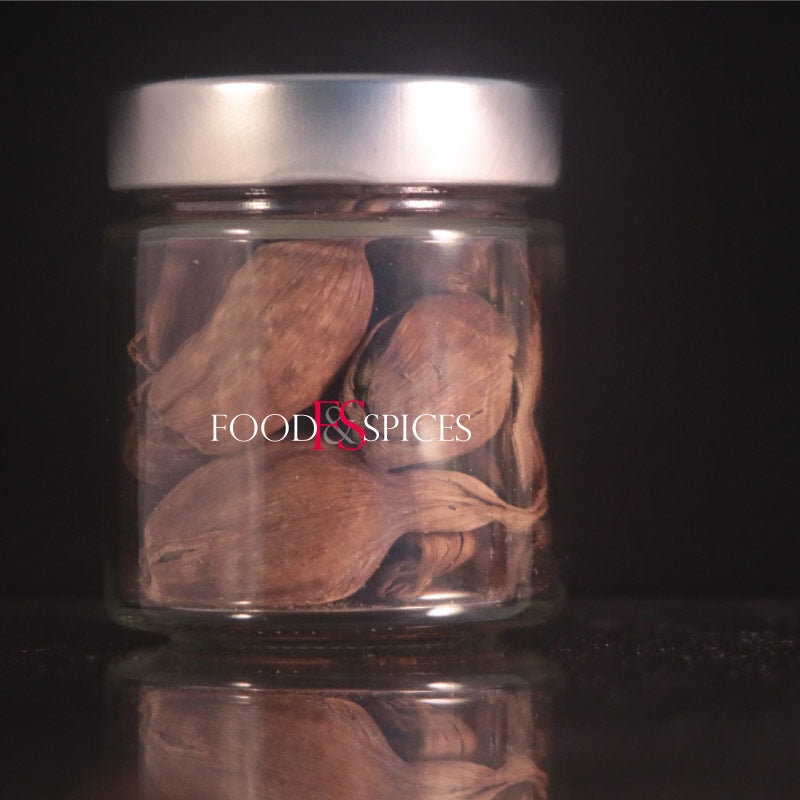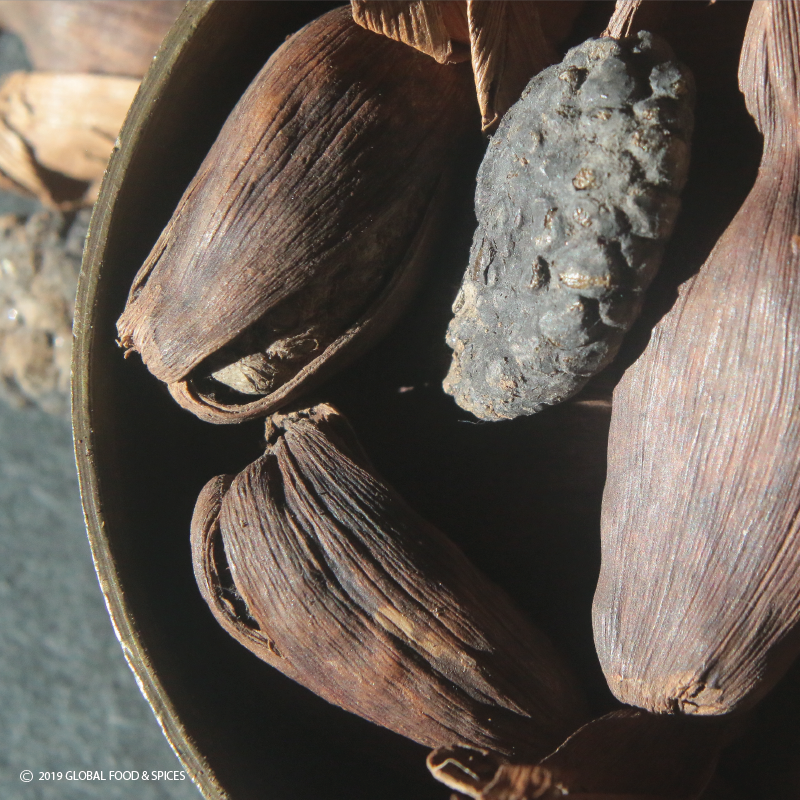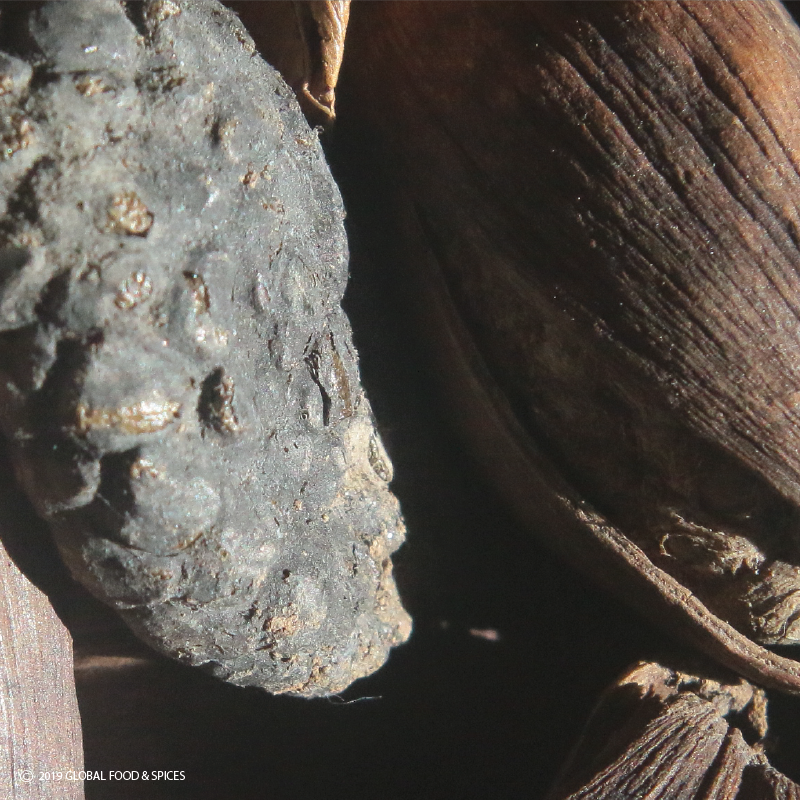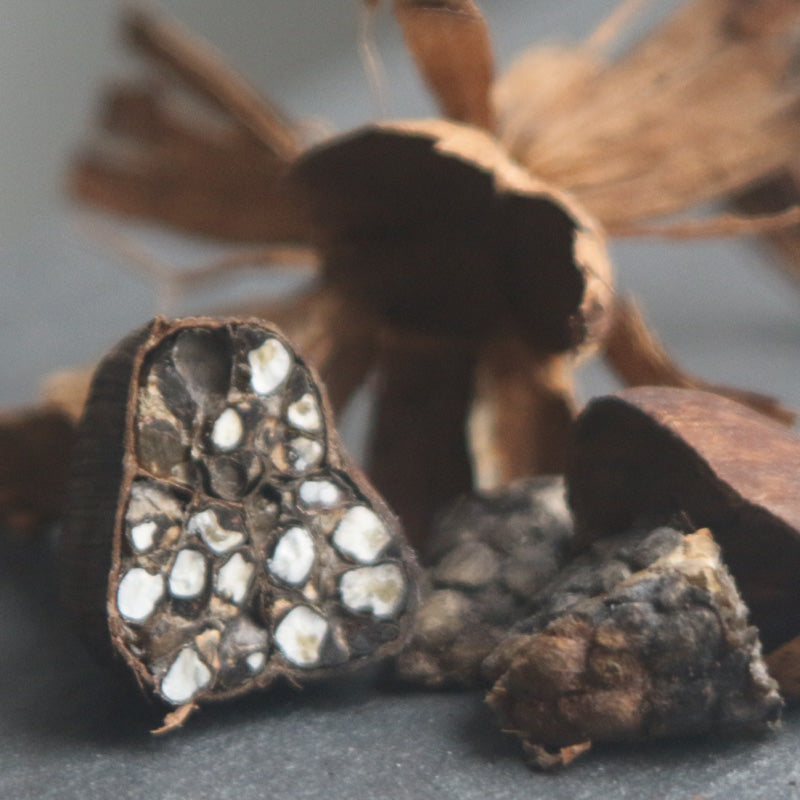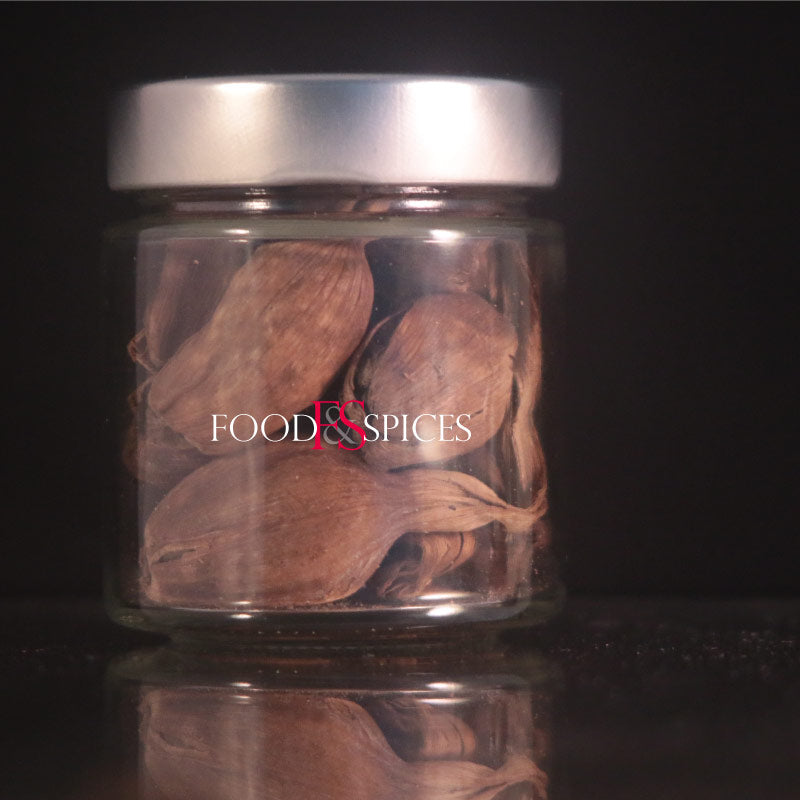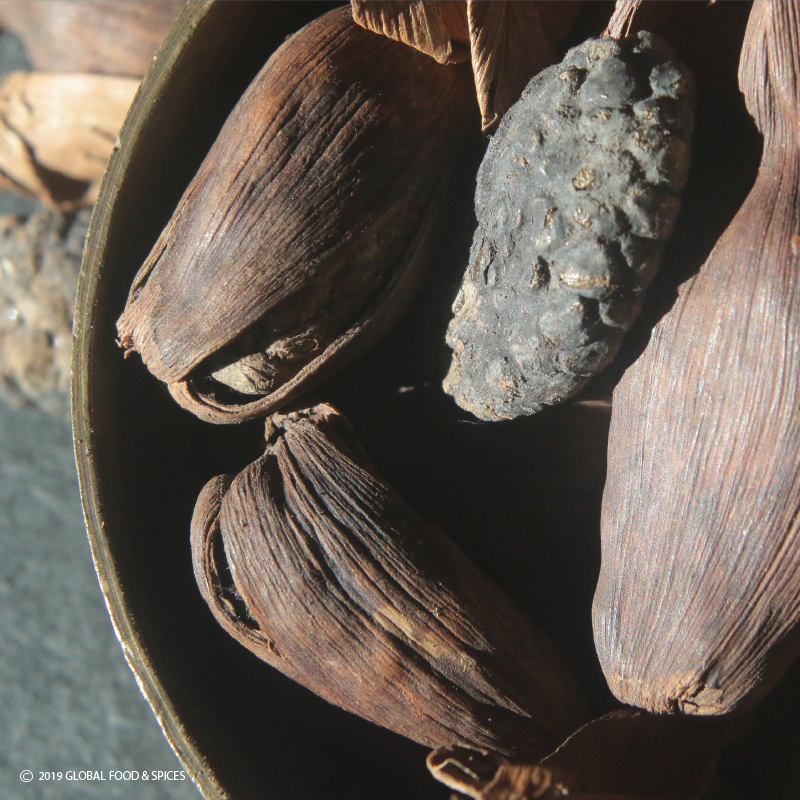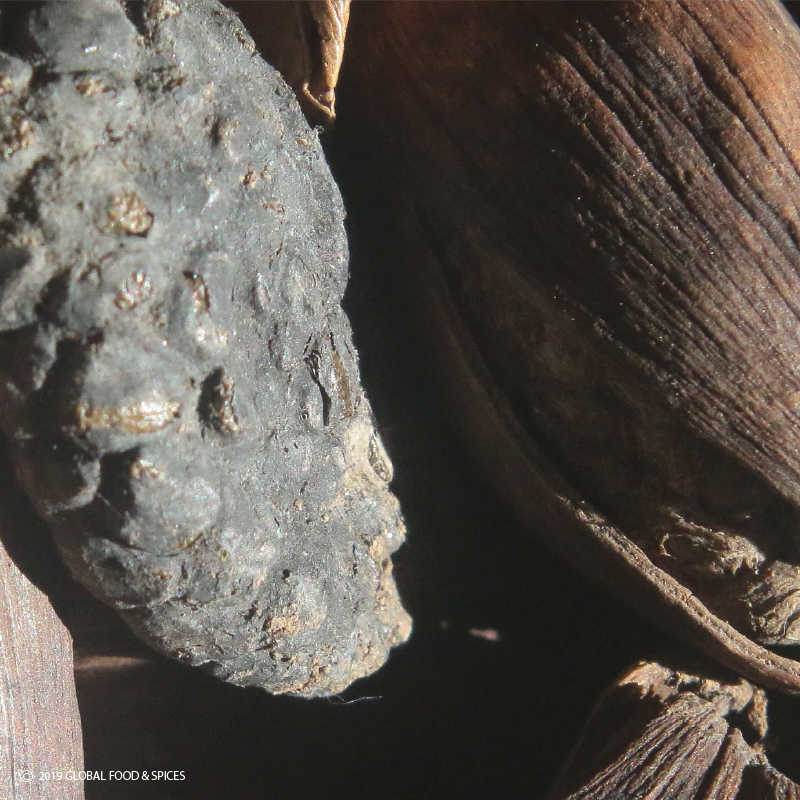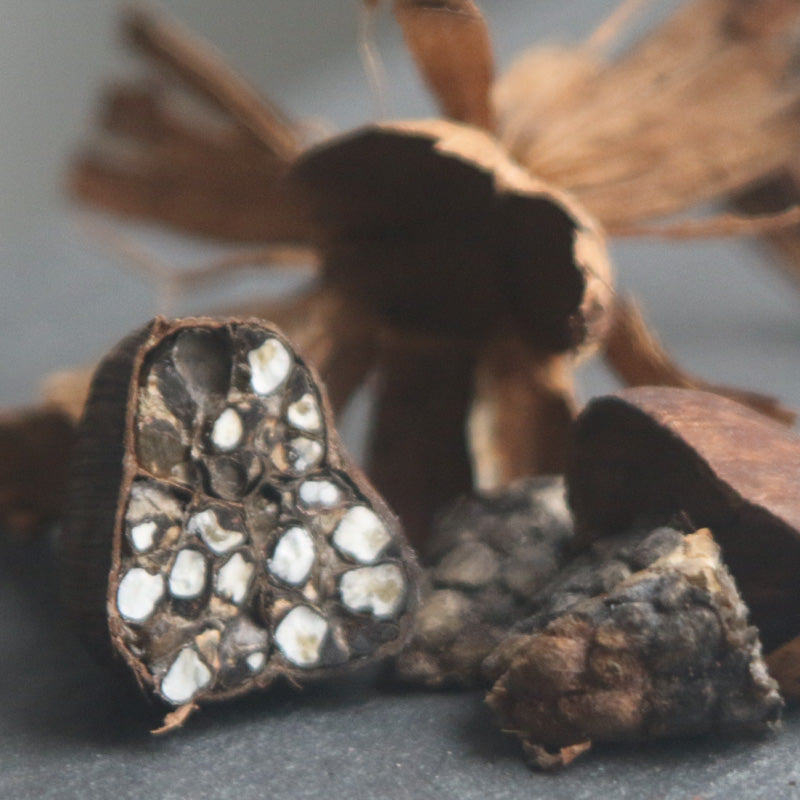depeperwinkel
Mbongo (pods)
Mbongo (pods)
Unable to load availability for pickup
These mbongô 'pods' filled with peppery seeds come from West Africa. Mbongo pepper is sometimes called alligator pepper. The egg-shaped seed pod - it is not a bean, therefore not a pod - contains seeds that are very similar to the better-known grain of paradise.
Typical for mbongo is the citrus aroma that immediately reminds you of lemongrass (sereh). Mbongô is one of the four local peppers in the famous Nigerian pepper soup nwo-nwo.
The mbongô grows on a two-meter-high shrub from the ginger genus, which, like many ginger-like plants, has rhizomes. Just above the ground it produces trumpet-shaped, green flowers that seem to come straight from the ground. They quickly fall off to make way for large bottle-shaped fruits.
The fruit pods are filled with dozens of seeds in a jelly-like liquid. Once dried, the papery covering conceals an egg-shaped fruit made up of apparently scaly segments. With some light pressure, these disintegrate into 3 mm large, shiny, pale brown seeds. Curiously enough, the intact mbongô has little or no odor, nor do the seeds. The scent is released as soon as you crush or grind the seeds.
Our mbongô comes from Cameroon, where the spice is used in many famous dishes, such as mbongô tchòbi, fish in black sauce. The spice is also used in other West African countries, such as in Nigeria in pepper soup.
Related spices are the aforementioned grain of paradise (Aframomum melegueta), kororima (Aframomum kororima) and the Madagascar cardamom (Aframomum angustifolium). The first is quite common, the second not so, and the third is very rare (not available).
Not just for eating!
A little bruised mbongô, a dash of cardamom and a piece of citrus peel together serve as a welcome on various occasions and ceremonies in both Yoruba and Igbo cultures. You can already have the unopened pods at home!
Smell and taste
The aroma is determined by a wonderfully fresh lemongrass scent (sereh), which disguises the fact that the seeds can be quite peppery. In terms of composition, the essential oil in mbongô is similar in many ways to that of cardamom and ginger. Some of the taste and smell essential oils in mbongô are:
- citronellol, the scent of sereh
- aphromodial, the unsaturated dialdehyde that causes the pungency,
- 1,8-cineole, eucalyptol, the refreshing taste of mint
- β-pinene, woody pine odor, as in cumin, pine, juniper and hemp,
- α-terpineol, sweet floral scent like lilac.
- sabinene, responsible for the woody, camphoraceous flavor of black pepper and nutmeg, among others
- β-myrcene, spicy aroma, with notes of fruits (mango, grape, peach) and mint,
- α-caryophyllene (humulene), hops, as in beer and cannabis
- d-limonene, citrus, orange flavor
Usage
Mbongô can literally be used in any dish, even in boiled rice or pasta, but preferably in a palette of West African spices and herbs such as gourd nutmeg, grain of paradise, selim pepper, cubeb pepper, ginger, garlic nut and African mint. All of them are seasonings from the fascinating West African gastronomy.
Before you open the seed pod (it is not eaten), it is roasted dark brown, allowing the seeds to display their rich aroma.After removing the 'paper' shell from the seed pod, crush the mbongo, releasing the individual seeds. Remove the membranes, remnants of the dried jelly, by rubbing the 'dirty' seeds between your hands and blowing away the membranes.
Features:
- 100% fruits of Aframomum danielli (unpeeled)
- origin: Cameroon
Assortment
- available in glass and stand-up pouch
- glass jar contains 45 grams - approximately 7 pods
- stand-up pouches with a capacity of up to 30 to 500 grams
- also available in 10 ml test tube (note: peeled)
- larger quantities on request
Gift packaging
- the jar is available in a tasteful gift packaging, consisting of a cube box filled with black tissue paper
- for an overview of our gift packaging, please refer to the gift packaging section
General advice
- grind the pepper at the last minute to maximize the aroma
Save:
- store your mbongo pepper in closed packaging
- preferably store in a dark, dry and cool place
- best before April 2026 (04/26)
- this expiration date is an indication
Would you like to know what this mbongo tastes like?
You can also try a test tube with peeled mbongo. The tube contains enough pepper to understand the flavor essence.
Share
